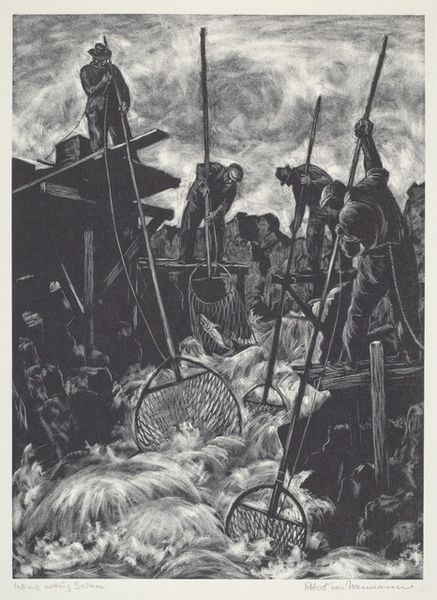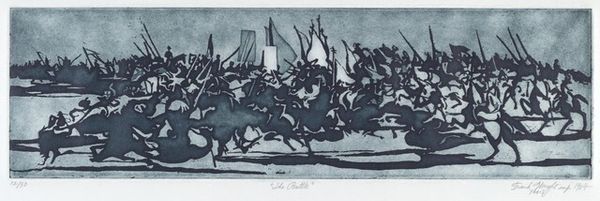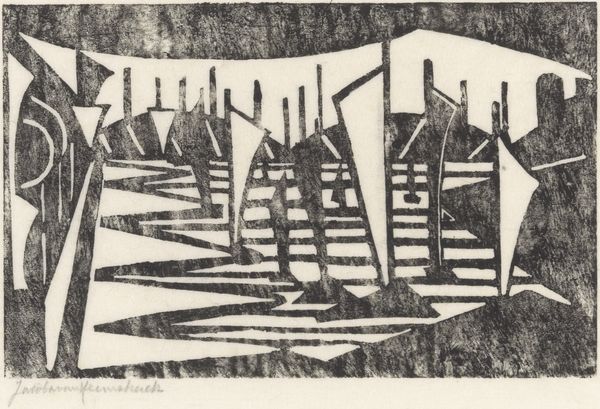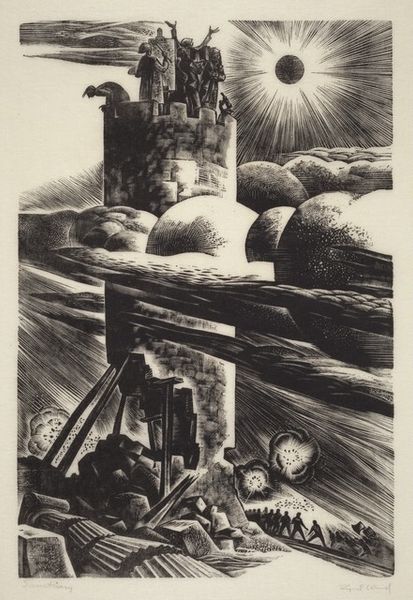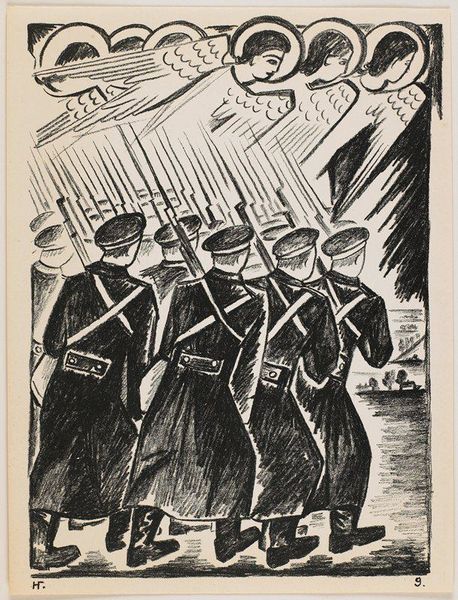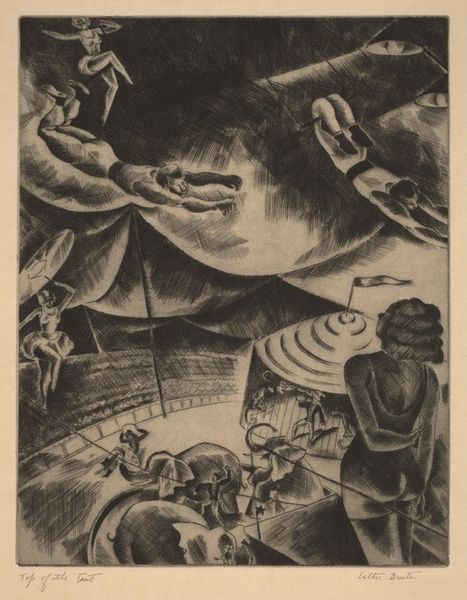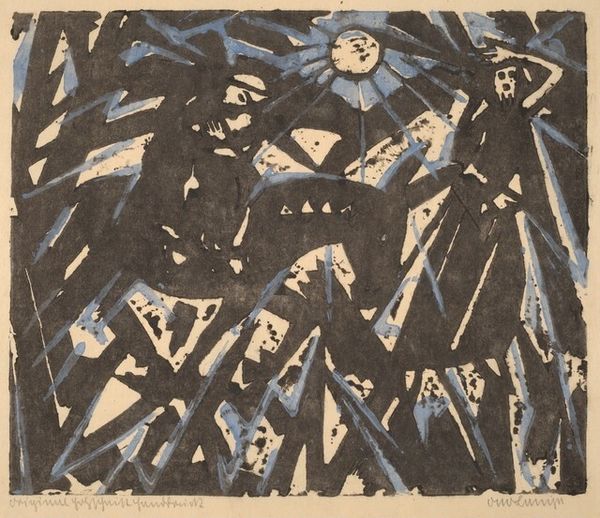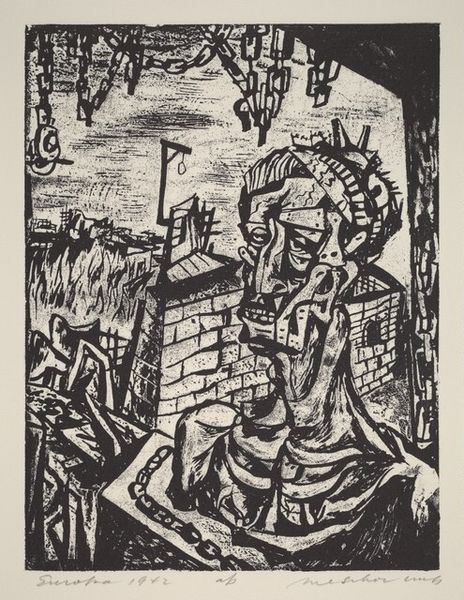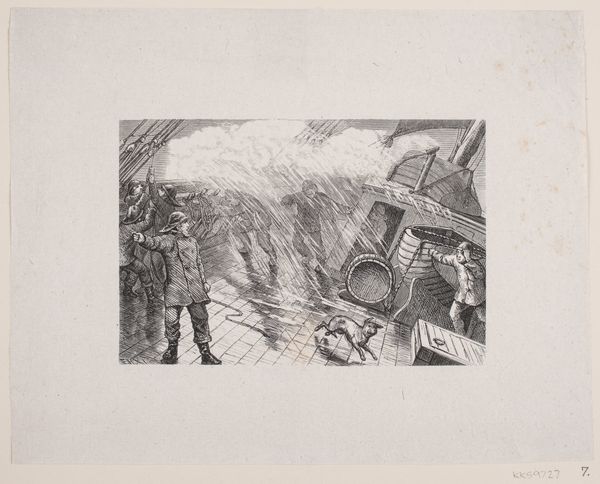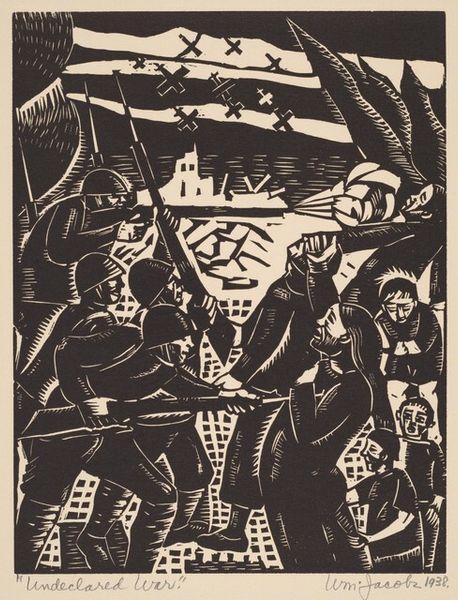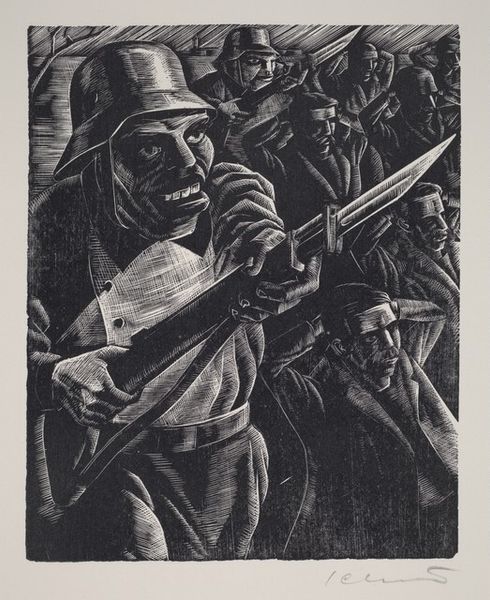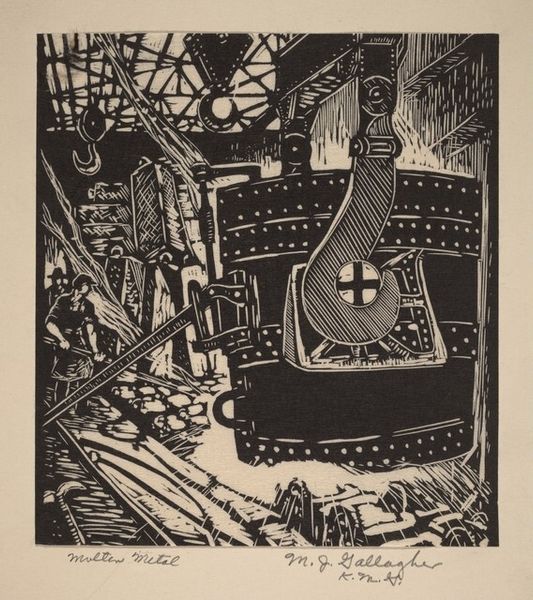
print, woodcut
#
narrative-art
# print
#
landscape
#
figuration
#
expressionism
#
woodcut
Copyright: Public domain US
Curator: Here we have Max Pechstein’s 1918 woodcut, "Somme." It is a powerful example of Expressionist printmaking capturing the brutal landscape of the First World War. Editor: Right away, it’s like a punch to the gut. All those bleak, scratchy lines, the harsh sun, it feels devoid of hope. The faceless figures marching onward are incredibly chilling, aren’t they? Curator: Absolutely. Pechstein, like many German artists of his generation, was deeply affected by the war. Although not on the front lines, his experience as a medic gave him first-hand exposure to its trauma, profoundly influencing his art. Editor: It really does read like a bad dream—or rather a nightmare given real form through art. I am particularly struck by that distorted church tower and sun motif behind it; they almost seem mocking or oppressive, casting a shadow over the soldiers. Curator: That contrast is central. Consider that much early 20th-century art served as propaganda for all sides during World War I. "Somme", by comparison, resists that. Its Expressionistic style emphasizes subjective emotion, communicating Pechstein’s inner turmoil as well as revealing an uncensored impression of destruction and desolation. The angular lines and stark black and white emphasize raw emotions and loss in a world upturned. Editor: It reminds us that art can bear witness in ways that written history sometimes can’t, conveying feeling more viscerally than any description of landscape. Look at the sun's rays almost cutting across the image with aggressive intention. It's brutal. It sears in like some kind of psychic scar or brand across the wounded earth itself! Curator: That’s a good point, and one often overlooked today. At the time Pechstein created "Somme", prints such as woodcuts and lithographs were seen as affordable, more accessible ways to get artwork into the homes of everyday citizens, bringing ideas to the public, often cheaply. "Somme" served as a strong counter-narrative to prevailing pro-war sentiments. Editor: "Somme" isn’t about glory or victory; instead it confronts you with devastation. We’re reminded that behind statistics there are actual humans enduring pain, something easily obscured in times of large-scale conflict. Thank you for highlighting this forgotten work. I felt moved deeply today. Curator: Indeed. It is easy for artwork from over a hundred years ago to get buried beneath shifting times, especially if such works resist prevailing contemporary mores. I’m grateful you shared your insight with our listeners. Hopefully some people visiting here today will reconsider art of this time through the more personal view offered by Pechstein's expressionistic statement here.
Comments
No comments
Be the first to comment and join the conversation on the ultimate creative platform.
